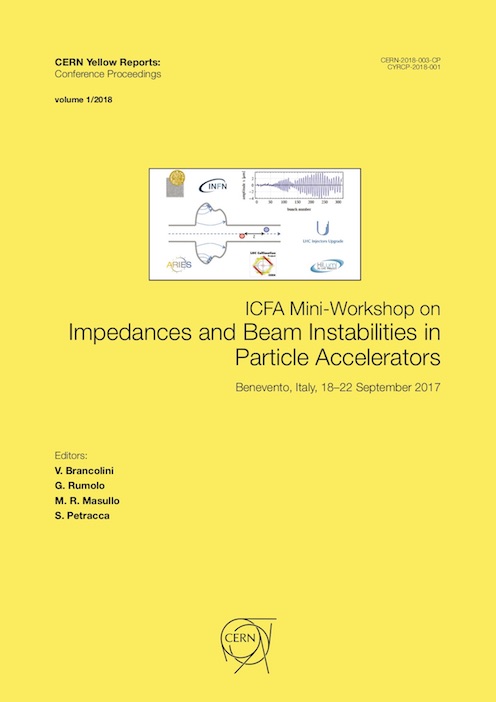Vlasov Solvers and Macroparticle Simulations
DOI:
https://doi.org/10.23732/CYRCP-2018-001.77Keywords:
Impedance, Transverse Instabilities, Wake fields, Vlasov solver, Macroparticle simulations.Abstract
We review here two essential methods to evaluate growth rates of transverse coherent instabilities arising from beam-coupling impedance in a synchrotron, namely Vlasov equation solvers and tracking simulation of macroparticles. We will discuss the basics of the two methods, reviewing in particular the theoretical grounding of Vlasov solvers -- giving all the necessary formulas in the case of the DELPHI solver. We will then assess the advantages and limitations of the two methods, by showing a number of practical applications, both in hadrons machines such as the CERN LHC and SPS, or in lepton synchrotrons such as LEP. In particular, we will show how the Vlasov solver DELPHI can help understanding the relative lack of success in trying to stabilize the transverse mode coupling instability using a reactive or resistive transverse feedback in LEP.Downloads
Published
2018-11-07
Issue
Section
Submission to the proc. of the ICFA Mini-Workshop Workshop "Impedances and Beam Instabilities in Particle Accelerators"
License
Authors who publish with this publication agree to the following terms:
- CERN retains copyright and publishes the work licensed under the Creative Commons Attribution License 4.0 that allows others to share the work with an acknowledgement of the work's authorship and initial publication in this series.
- Authors are able to enter into separate, additional contractual arrangements for distribution of the published version of the work (e.g., post it to an institutional repository or publish it in a book), with an acknowledgement of its initial publication in this series.
- Authors are permitted and encouraged to post their work online (e.g., in institutional repositories or on their website) prior to and during the submission process, as it can lead to productive exchanges, as well as earlier and greater citation of published work (See The Effect of Open Access).

